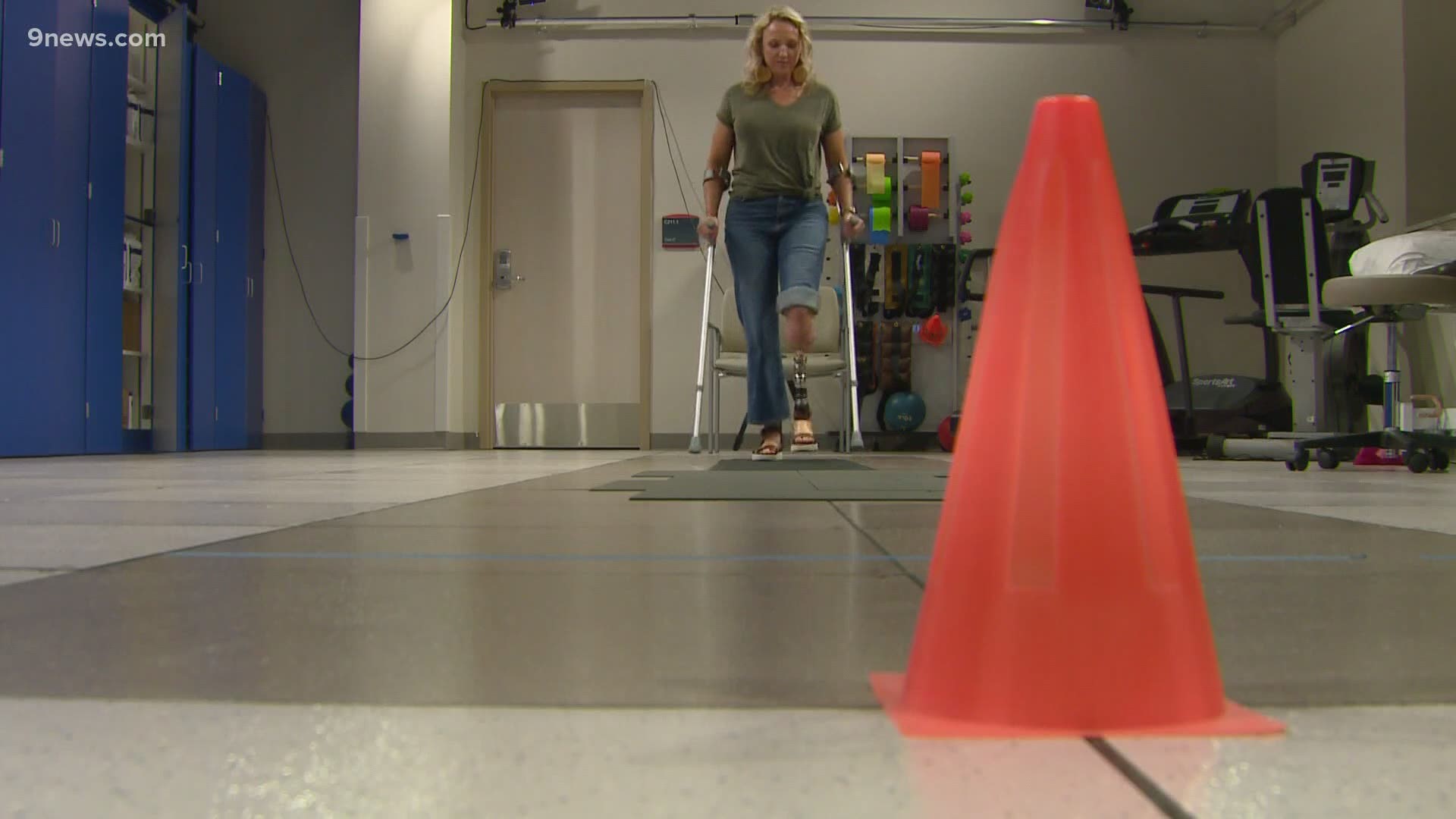DENVER, Colorado — A cutting edge surgery called osseointegration has arrived at the University of Colorado Hospital, helping amputees walk pain free and with a gait closer to life before losing a limb.
A typical socket prosthesis can help someone who has lost a leg walk on two legs again but not comfortably. As the leg swells throughout the day the need to refit the artificial limb with layers of socks and liners increases, further throwing off one’s walking pattern. Osseointegration anchors a carefully measured prosthesis directly to the skeleton.
“It’s been a long road to recovery, physically and emotionally, said Coloradoan Stacey Mickelsen, a mother and personal trainer who recently had the surgery at UCHealth. “When body image is kind of your identity and something like this happens, it rocks your world.”
In 2017 Stacey, her husband and children were staying on a houseboat with some friends on Lake Powell. The last thing she remembers of that night was going downstairs to gather some bedding.
“The explosion was in the engine compartment and I was standing on top of the engine compartment when it happened,” said Mickelsen of the blast that killed one of her friends and severely burned her husband. “Head injuries, neck injuries, eye injuries, both of my legs and feet were crushed.”
Ultimately, she decided on an amputation. But she was left with that uncomfortable, sometimes painful socket prosthetic. It limited her ability to get back to those outdoor activities she loved to do with her family.
That’s where Dr. Jason Stoneback, director of the limb restoration program at UCHealth comes in. He trained overseas to be able to perform osseointegration, one of the few in the United States doing so.
“The amputee can easily clip on and clip off their prosthesis, they can wear normal clothes, alignment of skeleton more closely matches before they have amputation,” said Stoneback. “They also have a really phenomenal benefit called osseoperception. That’s where they’re actually able to feel the pressure they’re putting through the ground through their prosthesis. They can feel where they are in space.”
Stoneback tested this on Mickelsen by having her close her eyes and tapping the outside and inside of her new prosthesis. She immediately pinpointed where he was touching. The vibration can be felt in the amputee’s bone. Stoneback is looking at ways to integrate the prosthesis to the neuro-network, so “when they think about raising their foot, it raises.”
Mickelsen, just a couple months out of surgery, will soon ditch her crutches and get back to cycling and other physical activity. High-tech measurements taken before and after surgery ensure a very comfortable future. Stoneback said this surgery reduces the chances of having wounds around the socket and allows amputees to build up muscle.
“First of all just walking without pain is fantastic. Going two and a half years in a socket was pretty miserable to me. coming right out of surgery I had no pain,” said Mickelsen, now looking at the world through a different lens. “What we've accomplished because of the human being we are is much more important than worrying about physical perfection.”
SUGGESTED VIDEOS: Science is Cool

